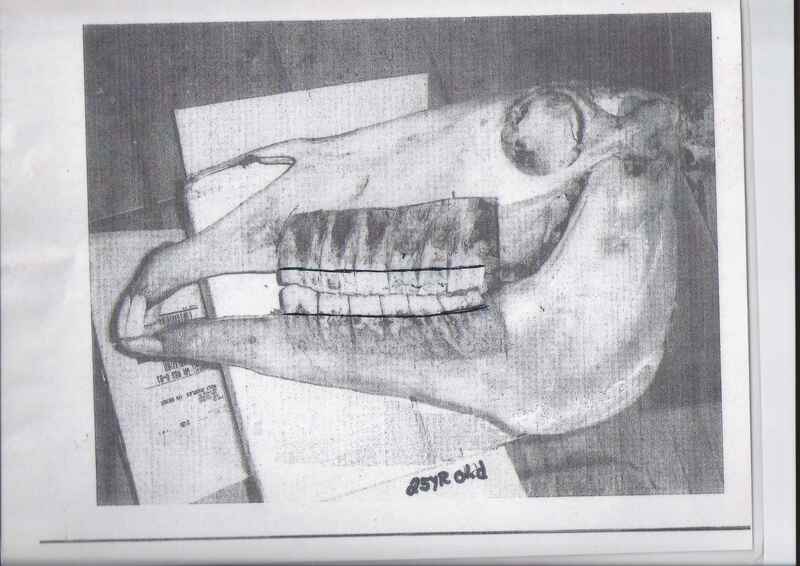Owner & Trainer Overview
Hiring any dental professional for your horse is important for performance and optimal health. We have found that the meeting of the teeth and the movements of the jaw impact and change the body - good or bad depending on the type of the balance or float. Some changes we see in our horses after this approach is increased muscular tone in atrophied areas, better posture, better proprioception and placement of the feet as well as better functional movement and digestion. Horses need regular care, but we believe the understanding of the differences in skillsets also needs to be considered in choosing a practitioner.
Understanding the stomatognathic system
a definite amount
Your horse is equipped with the teeth they will have for the duration of their life. We take a conservative approach to ensure the dentition is in place for the full life. We have found other dentistry schools do not necessarily take this approach. Below are two photos, one of a 5 year old horse's molar arcades and those of a 25 year old horse, showing the supply and expiration naturally occurring. This can be influenced and since the tooth is finite, care and concern must be taken to avoid excessive loss of dentition.
reviewing your horse
|
When viewing your horse, look at the horses conditioning, overdevelopments or atrophies. Consider the symmetry of your horse by comparing left to right regions, their posture, their movement and movement faults. These evaluations are where our practitioners and students start before even looking within the mouth or starting their balance, as it gives them a better picture of the full puzzle.
There are a few muscles to review especially: Temporalis Masseter |
What sets us apart
Intervals for care
|
A practitioner from our school will choose the best fit for the horses needs, often a 3, 6, or 12 month interval for dentistry. We do believe the condition of the mouth should improve as we continue, similar to farriery. If the same conditions return or return to be worse, the balance is not correct for the horse. Additionally, the horse will continue to wear and balance their mouth in between their visit, which means our practitioners will consider the continued wearing in the act of balancing the mouth. This is a factor to research in finding a practitioner for you and your horse. Remember, finding balance is a process and we strive to stay ahead, to continually make progress with the horse and set our intervals accordingly. Progress is best made in younger horses, so start them young on the right path!
|
Power Floats and Hand Floats
|
We use hand floats in our school and do not utilize power floats. Our practice consists of specific adjustments aimed at restoring innate movement of the jaw, conserving the finite resource that is the tooth, and considering the horses physiologic and anatomical needs. Power tools can pose certain risks, as they grind faster than we do, while producing heat and vibration on the tooth. The occlusal, or chewing, surface of the teeth is of importance to the act of mastication, as well as stabilization of skull and too much friction can smooth the tooth. We acknowledge the impact of the tool is practitioner dependent, but we believe hand instruments enable us to balance the horse the best. Our students and practitioners also use speculums to ensure proper care and balance of the last molars.
|


